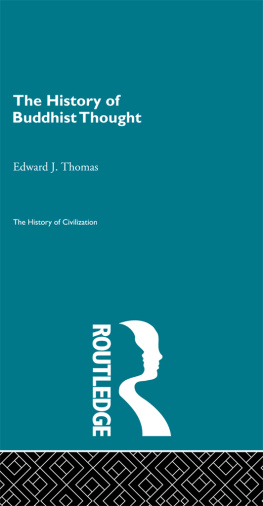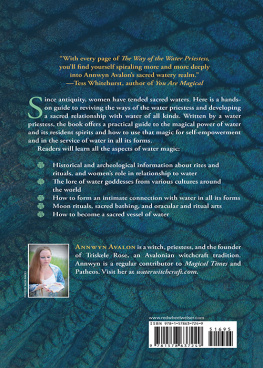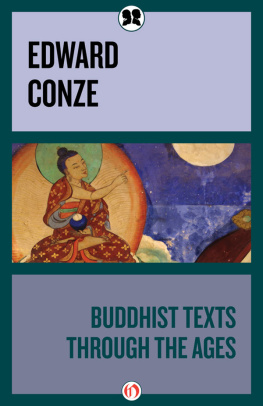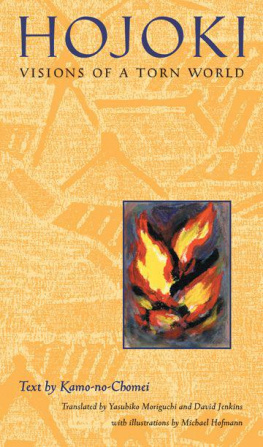Edward Kamens - The Buddhist Poetry of the Great Kamo Priestess
Here you can read online Edward Kamens - The Buddhist Poetry of the Great Kamo Priestess full text of the book (entire story) in english for free. Download pdf and epub, get meaning, cover and reviews about this ebook. year: 2020, publisher: University of Michigan Center for Japanese Studies, genre: Science. Description of the work, (preface) as well as reviews are available. Best literature library LitArk.com created for fans of good reading and offers a wide selection of genres:
Romance novel
Science fiction
Adventure
Detective
Science
History
Home and family
Prose
Art
Politics
Computer
Non-fiction
Religion
Business
Children
Humor
Choose a favorite category and find really read worthwhile books. Enjoy immersion in the world of imagination, feel the emotions of the characters or learn something new for yourself, make an fascinating discovery.

- Book:The Buddhist Poetry of the Great Kamo Priestess
- Author:
- Publisher:University of Michigan Center for Japanese Studies
- Genre:
- Year:2020
- Rating:5 / 5
- Favourites:Add to favourites
- Your mark:
- 100
- 1
- 2
- 3
- 4
- 5
The Buddhist Poetry of the Great Kamo Priestess: summary, description and annotation
We offer to read an annotation, description, summary or preface (depends on what the author of the book "The Buddhist Poetry of the Great Kamo Priestess" wrote himself). If you haven't found the necessary information about the book — write in the comments, we will try to find it.
The Buddhist Poetry of the Great Kamo Priestess — read online for free the complete book (whole text) full work
Below is the text of the book, divided by pages. System saving the place of the last page read, allows you to conveniently read the book "The Buddhist Poetry of the Great Kamo Priestess" online for free, without having to search again every time where you left off. Put a bookmark, and you can go to the page where you finished reading at any time.
Font size:
Interval:
Bookmark:

THE BUDDHIST POETRY of the GREAT KAMO PRIESTESS
Michigan Monograph Series in Japanese Studies Number 5
Center for Japanese Studies
The University of Michigan
THE BUDDHIST POETRY of the GREAT KAMO PRIESTESS
Daisaiin Senshi and Hosshin Wakash
by
EDWARD KAMENS
ANN ARBOR
Center for Japanese Studies
The University of Michigan
1990
Open access edition funded by the National Endowment for the Humanities/Andrew W. Mellon Foundation Humanities Open Book Program.
1990
by
Center for Japanese Studies
The University of Michigan
108 Lane Hall
Ann Arbor, MI 48109-1290
Library of Congress Cataloging-in-Publication Data
Kamens, Edward, 1952
The Buddhist poetry of the Great Kamo Priestess : Daisaiin Senshi and Hosshin wakash / by Edward Kamens.
p. cm. (Michigan monograph series in Japanese studies : no. 5)
Includes the text of Hosshin wakash.
Includes bibliographical references.
ISBN 0-939512-41-6
1. Senshi, Princess, daughter of MuraKami, Emperor of Japan, 964-1035. Hosshin wakash. 2. Buddhism in literature. I. Senshi, Princess, daughter of Murakami, Emperor of Japan, 964-1035. Hosshin wakash. 1990. II. University of Michigan. Center for Japanese Studies. III. Title. IV. Series.
PL789.S43H635 1990
895.6114dc20
89-71219
CIP
A Note on the Type
This book is typeset in Palatino. This face, designed by Hermann Zapf, combines a distinctly modern flavor with a calligraphic influence of its 16th-century heritage.
Composed by Typographic Insight, Ltd., Ann Arbor, Michigan
Index by AEIOU Inc.
Printed and bound by Braun-Brumfield, Inc., Ann Arbor, Michigan
Book design by Marty Somberg
The paper used in this publication meets the requirements of the ANSI Standard Z39.48-1984 (Permanence of Paper).
Printed in the United States of America
ISBN 978-0-47-203831-2 (paper)
ISBN 978-0-47-212802-0 (ebook)
ISBN 978-0-47-288002-7 (open access)
The text of this book is licensed under a Creative Commons Attribution-NonCommercial-NoDerivatives 4.0 International License: https://creativecommons.org/licenses/by-nc-nd/4.0/
This book is dedicated to the memory of Carolyn Wheelwright
19391989
CONTENTS
Support for this study was received from the Northeast Asia Council of the Association for Asian Studies, Inc., the Enders Fund of the Yale University Graduate School, and the Council on East Asian Studies of Yale University. Kadokawa Shoten graciously permitted reproduction of the text of Hosshin wakash from volume 3 (Shikash hen I) of the Shinpen kokka taikan. I wish to thank Professor Hashimoto Yuri and Professor Ishihara Kiyoshi for discussing Senshi and her poetry with me; Professor Stanley Weinstein and Richard Jaffe, for their assistance with questions of religious history and thought; and Professor Robert N. Huey, for a very close examination of one of the final drafts of this book and innumerable suggestions for its improvement. Mary Miller has helped and encouraged me all along the way: I cannot thank her enough.
| HSWKS | Hosshin wakash |
| NKBT | Nihon koten bungaku taikei. 100 vols. Tokyo: Iwanami Shoten, 1957-69. |
| SKT | Shinpen kokka taikan Hensh Iinkai, ed. Shinpen kokka taikan. Tokyo: Kadokawa Shoten, 1983-. |
| T | Takakusu Junjir and Watanabe Kaigyoku, eds. Taish shinsh daizky. 85 vols. Tokyo: Taish Issaiky Kankkai, 1924-32. |
| Zakki | Kamo chshin zakki |
This is a study of ways of reading some Japanese poems (waka) written by the woman known as the Imperial Princess Senshi (Senshi Naishinn) or as the Great Kamo Priestess Senshi (Daisaiin Senshi, or simply Daisaiin). She was born in 964 and died in 1035, in the Heian period of Japanese history (794-1185). Most of the poems discussed here are what may loosely be called Buddhist poems, since they deal with Buddhist scriptures, practices, and ideas. For this reason, most of them have been treated as examples of a category or subgenre of waka called Shakkyka, Buddhist poems, or more literally, poems on, about, or relating to the teachings and practices of Buddhism. In this term, Shakky means Buddhas (i.e., kyamunis) teachings, although the teachings referred to are by no means limited to those of the historical Buddha, and ka means poem here as it does in waka, a Sino-Japanese word for Japanese poem as distinguished from shi or kanshi, Chinese poem.
The very use of the term Buddhist poems, Shakkyka, in reference to Senshis poems suggests a certain way of reading those poems. But one of the things this study will show is that such a reading, if too encumbered by notions about that classification or genre, may mask the very important fact that most of her poems (and many others so classified) are really more like other poems in the waka canon than they are unlike them. In the case of Senshis Buddhist poems, especially the ones examined closely here, the links, through language, to the traditions of secular verse are explicit, and are very much in keeping with the expressed purpose of her project, which was to use the essentially secular and public literary language of waka, of which she had considerable and widely acknowledged mastery, to address and express very serious and relatively private religious concerns and aspirations. In reading Senshis poems, it is as important to think about their relationship to the traditions and conventions of waka and to other waka texts as it is to think about their relationship to Buddhist thought, practices, and texts.
Some of Senshis poems discussed here may be encountered in more than one context in the canons of Japanese poetry. The effect of reading these poems in the context of her so-called private collections (shikash), which actually contain poems not only by Senshi but also by women of her salon or retinue, or in the context of the cycle entitled Hosshin wakash (A Collection of Japanese Poems for the Awakening of Faithwhich will receive special attention in this study, is very different from their effect when they are read grouped with others judged to be of their kind, in one sense or another, by the compilers of the canonical waka anthologies (chokusensh, i.e., imperially commissioned collections of Japanese poetry). Waka studies both in Japan and elsewhere tend to focus almost exclusively on the major waka anthologiesthe Kokin wakash, the Shin kokin wakash, and the likeand for good reason, given their historical importance and the masterful effects achieved therein through the sophisticated arrangement of poems culled from diverse sources. The circumstances in which these anthologies were created imparted great prestige to them, and that prestige was imparted in turn to their contents. As a result, these anthologies have been dominant among the various settings in which readers have, for centuries, encountered the works of Japanese poets. But many of the poems encountered in such settings also can be and should be read within their original or at any rate alternative contexts: in cycles of poems composed for inscription on commemorative works of art, or in the competitive and highly charged sociopolitical setting of the utaawase
Font size:
Interval:
Bookmark:
Similar books «The Buddhist Poetry of the Great Kamo Priestess»
Look at similar books to The Buddhist Poetry of the Great Kamo Priestess. We have selected literature similar in name and meaning in the hope of providing readers with more options to find new, interesting, not yet read works.
Discussion, reviews of the book The Buddhist Poetry of the Great Kamo Priestess and just readers' own opinions. Leave your comments, write what you think about the work, its meaning or the main characters. Specify what exactly you liked and what you didn't like, and why you think so.

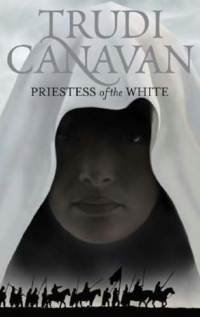
![Kamo - How to Draw Cute Doodles and Illustrations: A Step-by-Step Beginners Guide [With Over 1000 Illustrations]](/uploads/posts/book/438310/thumbs/kamo-how-to-draw-cute-doodles-and-illustrations.jpg)
